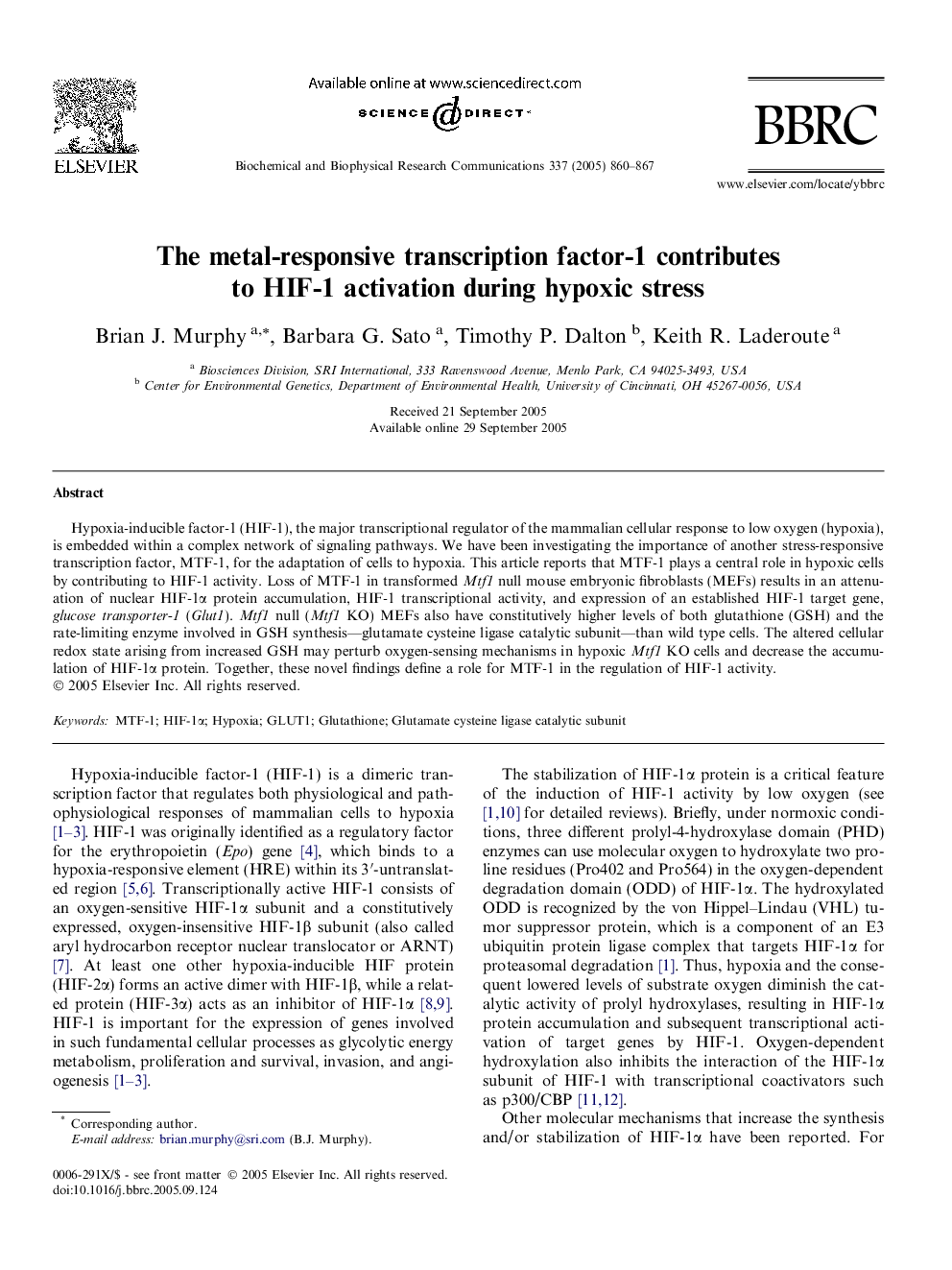| Article ID | Journal | Published Year | Pages | File Type |
|---|---|---|---|---|
| 10767639 | Biochemical and Biophysical Research Communications | 2005 | 8 Pages |
Abstract
Hypoxia-inducible factor-1 (HIF-1), the major transcriptional regulator of the mammalian cellular response to low oxygen (hypoxia), is embedded within a complex network of signaling pathways. We have been investigating the importance of another stress-responsive transcription factor, MTF-1, for the adaptation of cells to hypoxia. This article reports that MTF-1 plays a central role in hypoxic cells by contributing to HIF-1 activity. Loss of MTF-1 in transformed Mtf1 null mouse embryonic fibroblasts (MEFs) results in an attenuation of nuclear HIF-1α protein accumulation, HIF-1 transcriptional activity, and expression of an established HIF-1 target gene, glucose transporter-1 (Glut1). Mtf1 null (Mtf1 KO) MEFs also have constitutively higher levels of both glutathione (GSH) and the rate-limiting enzyme involved in GSH synthesis-glutamate cysteine ligase catalytic subunit-than wild type cells. The altered cellular redox state arising from increased GSH may perturb oxygen-sensing mechanisms in hypoxic Mtf1 KO cells and decrease the accumulation of HIF-1α protein. Together, these novel findings define a role for MTF-1 in the regulation of HIF-1 activity.
Related Topics
Life Sciences
Biochemistry, Genetics and Molecular Biology
Biochemistry
Authors
Brian J. Murphy, Barbara G. Sato, Timothy P. Dalton, Keith R. Laderoute,
